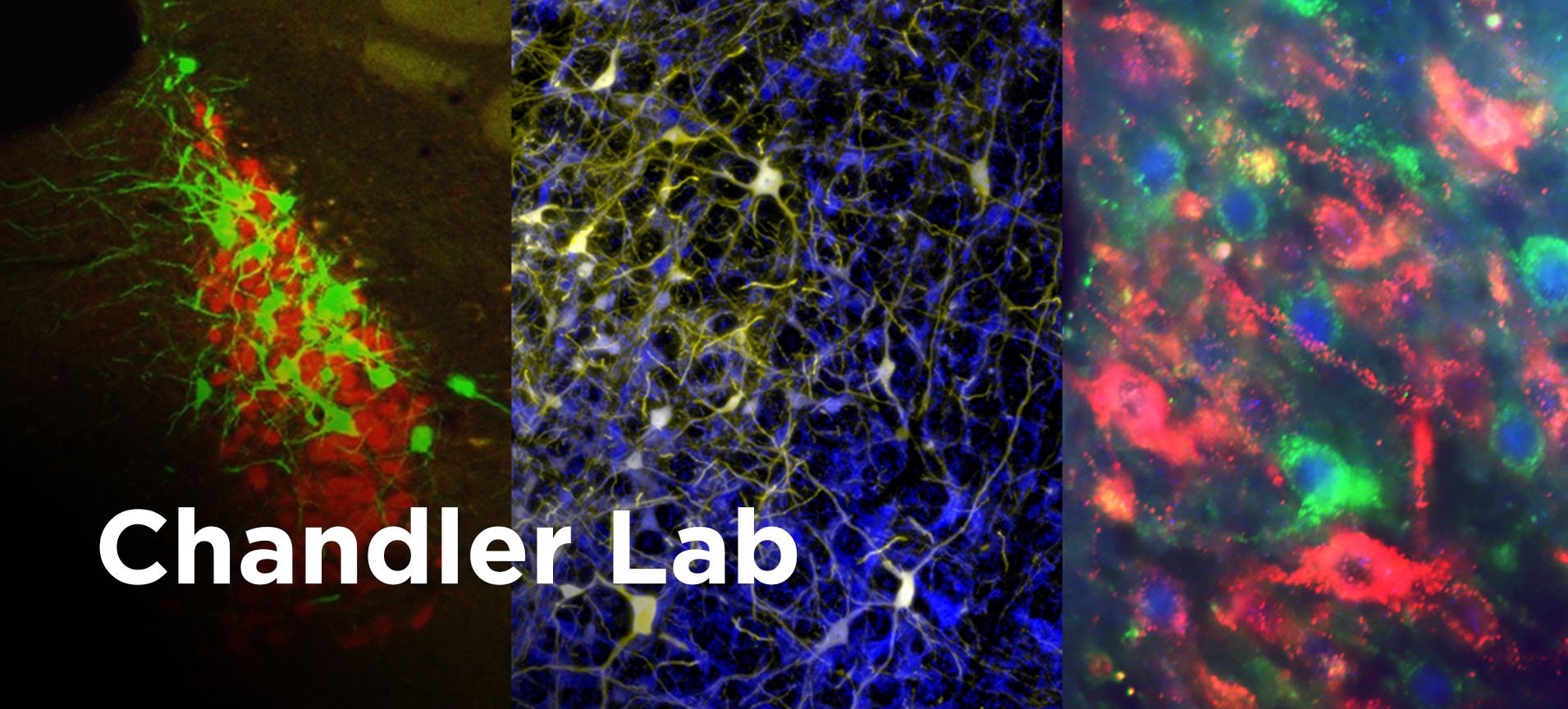Our Research
Our Research
Our Research
Overview
The Chandler lab is currently investigating how exposure to an acute ethologically relevant stressor mediates long-term changes in anxiety-like behavior by way of neuroadaptations that occur in the locus coeruleus. We have previously shown that a single episode of physical restraint coupled with the odor of a predator elicits persistent hyperactivity and hyperexcitability of locus coeruleus neurons in rats. These changes are accompanied by long-term increases in anxiety-like behavior as well. We are currently investigating cellular and circuit-level mechanisms for these changes within the locus coeruleus to identify markers for stress susceptibility and resilience. Such an approach will allow us to identify mechanisms of preventing or counteracting these maladaptive neuroadaptations to reduce the severity and duration of the behavioral impact of stressor exposure.
Main techniques
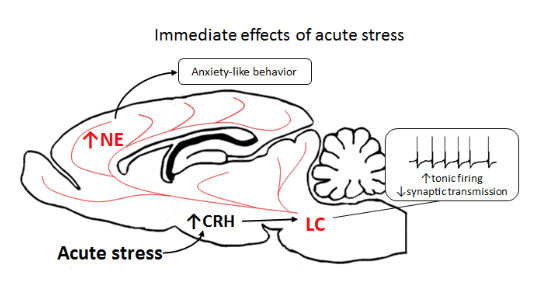 We primarily use rodent behavioral assays of anxiety-like behavior and whole-cell patch clamp electrophysiological recordings of locus coeruleus neurons to identify links between stress-induced behavioral and physiological adaptations. We also use immunohistochemical methods to identify pathways and morphological changes that are involved in the generation of a chronic anxiety-like behavioral phenotype. Real time PCR to is also used to quantify stress-induced changes in gene expression which might underlie these effects, as well as viral-genetic strategies to probe the functional roles of specific locus coeruleus circuits in mediating anxiety-like behavior. More recently, our laboratory has expanded its interests to investigate how chronic stress promotes neuroinflammation in the locus coeruleus that lead to persistent physiological and behavioral adaptations.
We primarily use rodent behavioral assays of anxiety-like behavior and whole-cell patch clamp electrophysiological recordings of locus coeruleus neurons to identify links between stress-induced behavioral and physiological adaptations. We also use immunohistochemical methods to identify pathways and morphological changes that are involved in the generation of a chronic anxiety-like behavioral phenotype. Real time PCR to is also used to quantify stress-induced changes in gene expression which might underlie these effects, as well as viral-genetic strategies to probe the functional roles of specific locus coeruleus circuits in mediating anxiety-like behavior. More recently, our laboratory has expanded its interests to investigate how chronic stress promotes neuroinflammation in the locus coeruleus that lead to persistent physiological and behavioral adaptations.
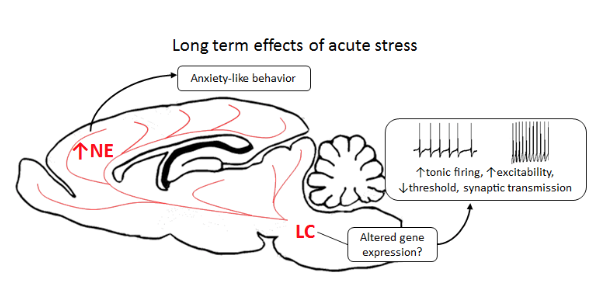
Schematic illustrating how acute stressor exposure precipitates long-term changes in locus coeruleus function and behavior. Immediately after stressor exposure, the locus coeruleus becomes hyperactive, thereby increasing forebrain norepinephrine content and promoting hyperarousal and vigilance. One week later, locus coeruleus neurons show increased spontaneous discharge as well as increased excitability, indicating that some persistent neuroadaptation has occurred, possibly by way of altered gene expression. Thus, the locus coeruleus is still releasing norepinephrine in the brain at a greater level than in control rats, potentially contributing to the heightened anxiety-like behavior seen in these rats. Identifying other changes that occur in locus coeruleus will aid in determining means of preventing or reducing stress-induced increases in anxiety-like behavior.
Recent Publications
Review Articles:
D.J. Chandler & B.D. Waterhouse. 2012. Evidence for broad versus segregated projections from cholinergic and noradrenergic nuclei to functionally and anatomically discrete subregions of prefrontal cortex. Frontiers in Behavioral Neuroscience, 6(20).
D.J. Chandler. 2012. Something's got to give: psychiatric disease on the rise and novel drug development on the decline. Drug Discovery Today, 18:3-4
D.J. Chandler, B.D. Waterhouse & W.J. Gao. 2014. New Perspectives on Catecholaminergic Regulation of Executive Circuits: Evidence for Independent Modulation of Prefrontal Functions by Midbrain Dopaminergic and Noradrenergic Neurons. Frontiers in Neural Circuits, 8(53).
D.J. Chandler. 2016. Evidence for a specialized role of the locus coeruleus noradrenergic system in cortical circuitries and behavioral operations. Brain Research 1641(Pt B): 197-206
B.D. Waterhouse & D.J. Chandler. 2016. Heterogeneous organization and function of the central noradrenergic system. Brain Research 1641(Pt B): v-x.
*O. Borodovitsyna, M.D. Flamini & D.J. Chandler. 2017. Noradrenergic modulation of cognition in health and disease. Neural Plasticity: Article ID 6031578, https://doi.org/10.1155/2017/6031478
*O. Borodovitsyna, N. Joshi & D.J. Chandler. 2018. Persistent stress-induced neuroplastic changes in the locus coeruleus/norepinephrine system. Neural Plasticity: Article ID ID 1892570, https://doi.org/10.1155/2018/1892570
D.J. Chandler, P. Jensen, J.G. McCall, A.E. Pickering, L.A. Schwarz & N.K. Totah. 2020. Redefining noradrenergic modulation of behavior: Impacts of a modular locus coeruleus architecture. Journal of Neuroscience 39(42): 8239-8249
G. Poe, S. Foote, O. Eschenko, J. Johansen, S. Bouret, G. Aston-Jones, C. Harley, D. Manahan-Vaughan, D. Weinshenker, R. Valentino, C. Berridge, D.J. Chandler, B. Waterhouse & S. Sara. 2020. Loccus coeruleus: A new look at the blue spot. 2020. Nature Reviews Neuroscience, 21: 644-659.
Peer-reviewed Research Articles:
D.J. Chandler, C.S. Lamperski & B.D. Waterhouse. 2012. Identification and distribution of projections from monoaminergic and cholinergic nuclei to functionally differentiated subregions of prefrontal cortex. Brain Research, 1522:38-58
D.J. Chandler, W.J. Gao & B.D. Waterhouse. 2013. Heterogeneous Organization of the Locus Coeruleus Projections to Prefrontal and Motor Cortices. Proceedings of the National Academy of Science, 111(18): 6816-6821.
E.W. Prouty, B.D. Waterhouse & D.J. Chandler. 2017. Corticotropin releasing factor dose-dependently modulates excitatory synaptic transmission in the noradrenergic nucleus locus coeruleus. European Journal of Neuroscience, 45(5): 712-722.
E.W. Prouty, Chandler D.J. & Waterhouse B.D. 2017. Neurochemical differences between target-specific populations of rat dorsal raphe projection neurons. Brain Research, 1675: 28-40
*O. Borodovitsyna, M.D. Flamini & D.J. Chandler. 2018. Acute stress persistently alters locus coeruleus function and anxiety-like behavior in adolescent rats. Neuroscience, 373: 7-19.
E.W. Prouty, D.J. Chandler, W.J. Gao & B.D. Waterhouse. 2018. Dorsal raphe neurons projecting to medial prefrontal cortex are selectively vulnerable to corticosterone-induced hypofunction. In press, European Journal of Neuroscience
N.W. Plummer, D.J. Chandler, J.M. Powell, E.L. Scappini, B.D. Waterhouse & P. Jensen. An intersectional viral-genetic method for fluorescent tracing of axon collaterals reveals details of noradrenergic locus coeruleus strucute. eNeuro 7(3).
*O. Borodovitsyna, B.C. Duffy, A.E. Pickering & D.J. Chandler. 2020. Anatomically and functionally distinct locus coeruleus efferents mediate opposing effects on anxiety-like behavior. 2020. Neurobiology of Stress, doi: 10.1016/j.ynstr.2020.100284.
*:indicates Rowan SOM GSBS student publication
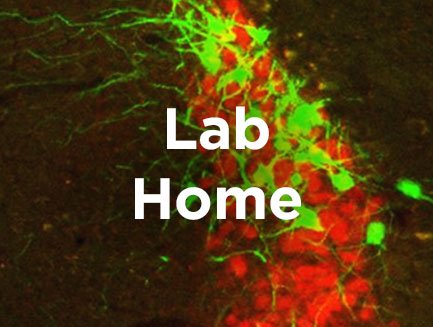
Lab Home Page
Humans are exposed to stress daily throughout their lives. During a stressful experience, the brainstem nucleus locus coeruleus becomes engaged and releases norepinephrine throughout the central nervous system...
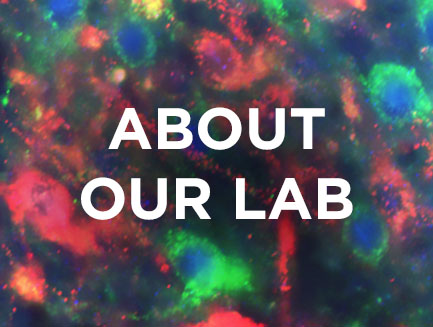
About Our Lab
Dr. Chandler received his BA in Neuroscience from Hamilton College in Clinton, NY. He then went on to receive his PhD in Neuroscience from Drexel University...
